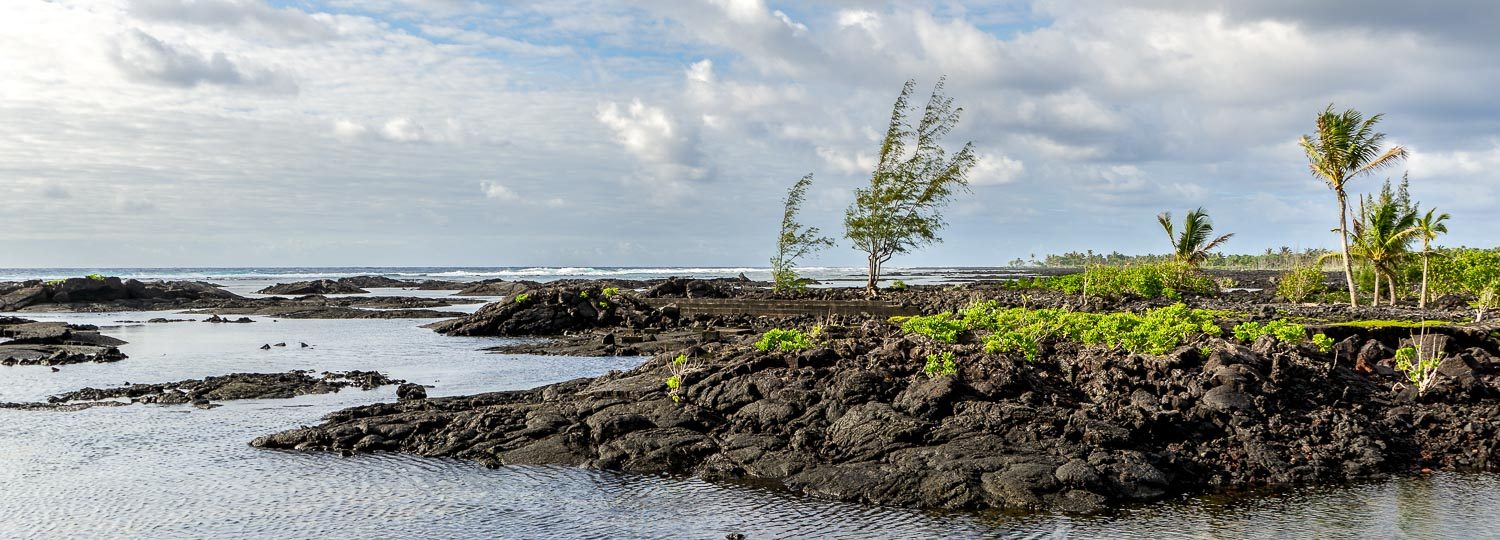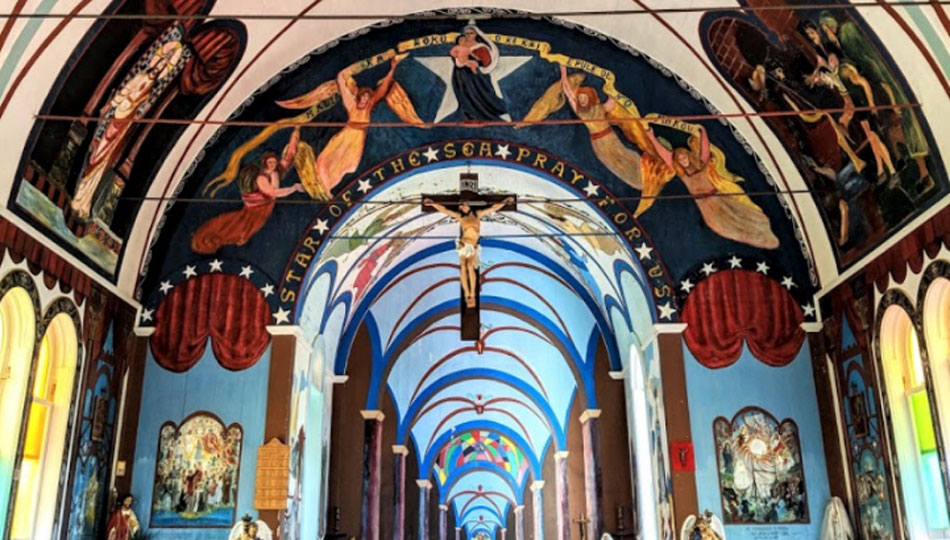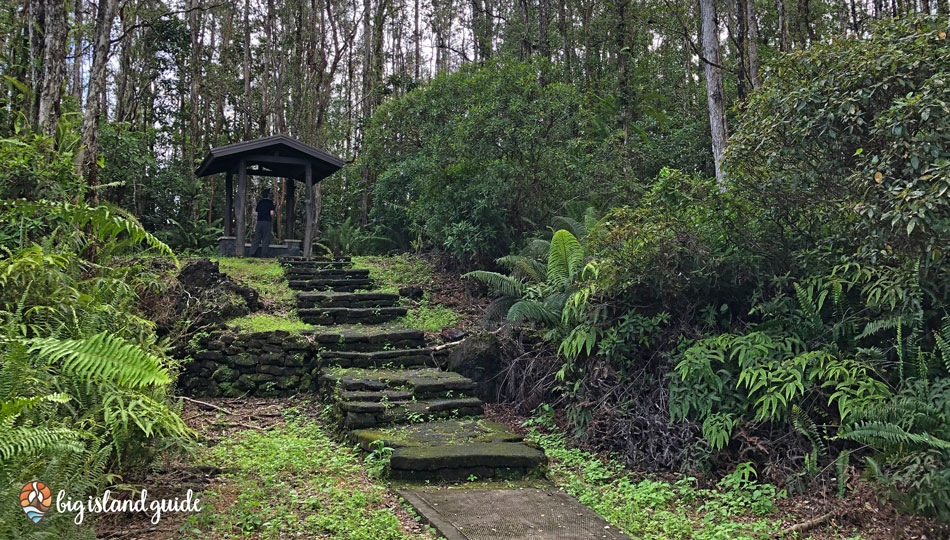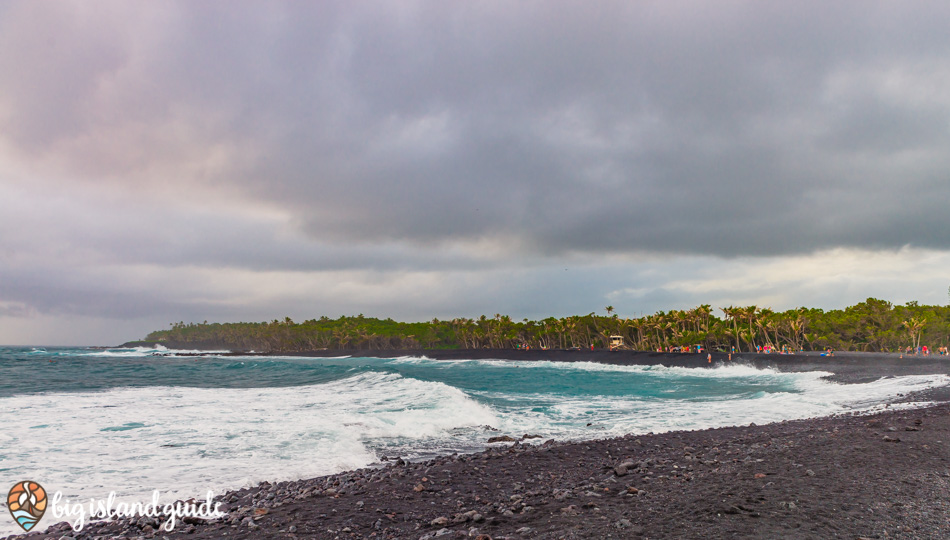Explore Vacation Rentals in Puna
This vast and sleepy region has no large resorts or hotels, making it a perfect escape if you can locate great Puna Vacation Rentals, so try these tips.

A perfect stopover from a trip to or from Hawaii Volcanoes National Park, the district of Puna along the eastern tip of the Big Island offers a dramatic and refreshing contrast to the beaches of Kona and the dry, barren volcanic geography found around the park itself. Teeming with dense tropical forests, staggering seaside cliffs, and enduring evidence of the influence of volcanic activity on the island, Puna doesn’t just present visitors with natural attractions – it offers a glimpse of life on Hawaii unlike any other area in the state can provide.

That’s why we’d recommend spending a day in Puna Hawaii to explore the area and meet the locals who live and work there. Above all else, it’s humbling to observe and appreciate the lifestyle that comes with settling down in such a rugged and active geological area and the amazing culture that results.
Despite the dangers posed by the active volcanoes around Puna, an affordable housing market has led to a major development boom in recent years. As the last affordable housing environment in the entire state, the District of Puna stands in stark contrast to the tourism-led development and construction that’s all but swept up other areas in Hawaii.

This has pushed longtime residents to the District of Puna from places like Kailua-Kona and Hilo, where affordable housing is rare. Many Puna residents commute across the island or north to Hilo for work, but many others stay in Puna and follow their craft. Here you’ll see hippies, painters, artists, musicians and writers share their work in galleries and shops that are scattered throughout the region. Along the highways, it’s not uncommon to see a group of people walking to or from their next destination, seeing no need for vehicular transportation or carrying a surfboard across their back.

Image: N Lear Dec 2018
Pahoa serves as the headquarters and central gathering point for locals and visitors to Puna alike. Located roughly in the middle of the Puna District, this tiny village is a quirky oasis situated in the middle of a lush rainforest that makes for a great spot to grab lunch or browse some unique local shops. Due to the seclusion, many artistic people retreat to Puna, seeking the isolation from crowds, traffic, and today’s hectic lifestyle. That’s not to say Pahoa isn’t lively, but it’s those quieter attributes that make it such a special place.
Puna is famous for volcanic activity – it contains the three highest categories of the nine Lava Flow Hazard Zones found on the Big Island. Because of the high risk involved with calling Puna home, homeowners insurance is difficult to acquire and often requires buying boutique coverage from overseas agencies that specialize in high-risk and unusual insurance policies.

Image: USGS
The current volcanic eruption in Puna has been occurring since 1983 and routinely places homeowners in the path of the danger. In 1986, a series of lava flows from Kilauea destroyed and buried most of Kalapana with another flow finishing the job and creating a near ghost town in 1990. Since 1980 and the first lava flows, more than 900 structures have been destroyed in Puna and the threat changes with the flow of the lava. Daily flow updates are released by the Hawaii Volcano Observatory and have the potential to influence life on a regular basis.

Image: Shutterstock
In 2014, an advancing lava flow threatened to close Highway 130, a crucial route to the rest of the island, prompting the National Park Service to announce support for an emergency access road spanning 8 miles should the flow continue. While the flow did eventually stop and the danger was averted, a home was swallowed up by the lava flow and destroyed. Another massive flow in 2018 destroyed much of the Leilani Estates, Lanipuna Gardens and Kapoho Vacationland communities as well as covering over 6,000 acres of land. Fissure 8, where much of the eruption flowed from, created a cone that reached around 180 feet tall.
A natural attraction to those visiting the heavily volcanic region, Puna allows easy access to the lava fields and the active flows when they are flowing. Depending on the direction of the flow and wind conditions (which can push dangerous volcanic gasses toward trails), access to the flows may differ each day. Be sure to check with the National Park Service before heading out. Since the 2018 flow ceased, there have been no active ground flows in the area.

A remnant of the old Kalapana, Star of the Sea is actually an old painted Catholic church that was saved and relocated in the wake of the 1990 lava flow that destroyed the town. Designated by the National Register of Historic Places, the church is still in operation and open to the public from 9 AM to 4 PM daily.

Lava Tree State Park has some of the most amazing lava formations coupled with tropical plants and vegetation that make for incredible sightseeing. A 15-minute loop along a trail will take you through the park and let you witness a formation of nature in the lava pillars formed by flows pushing through the area and enveloping entire tree trunks.

Also known as the Waiopae Tide Pools Marine Life Conservation District, the Kapoho Tide Pools were a beautiful snorkeling destination in Kapoho Bay. Unfortunately, during the 2018 eruption this area was covered over with lava and much of the habitat destroyed. You can not currently access this area.

Known as one of the best surf spots on the Big Island, Isaac Hale Beach Park has several pavilions, established walkways, picnic tables, benches, and BBQ pits. There’s also a huge black sand beach that formed during the 2018 eruption, blocking access to the old boat ramp. If you choose to swim here, note that strong currents and waves can make swimming difficult. When waters are calm, swimming is good, but there’s a reason it’s more common to see a surfboard here.

While nude beaches aren’t legal in Hawaii, Kehena Black Sand Beach is famously a “clothing optional” destination. Long and narrow, the beach is also known as “Dolphin Beach” due to the near-constant presence of spinner dolphins in the water. Swimming here is also possible, but strong undercurrents and high surf can make it treacherous. So bring your suit (or not) and bask on the black sand, either way, now you know what to expect.
Now just a tiny community, the once bustling town of Kalapana was completely destroyed by a lava flow in 1990. Located at the end of Highway 137, the original Kalapana site is now covered by lava rock and a new black sand beach has begun to form about 20 minutes from the parking area. There’s also a few restaurants and shops that have popped up nearby, but few call Kalapana home these days.

Image: Shutterstock

This vast and sleepy region has no large resorts or hotels, making it a perfect escape if you can locate great Puna Vacation Rentals, so try these tips.
An oceanfront property with plenty of luxury features, the Bali House and Bali Cottage are excellent options for a Big Island vacation.
The Big Island experienced an eruption of Kilauea during the summer of 2018, marking some of the most significant seismic activity in decades.